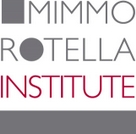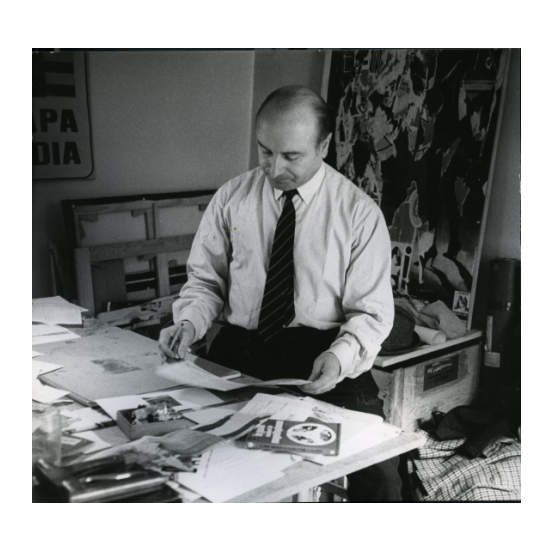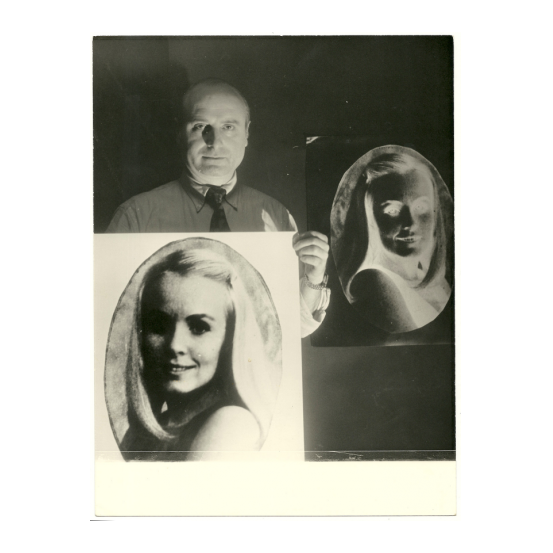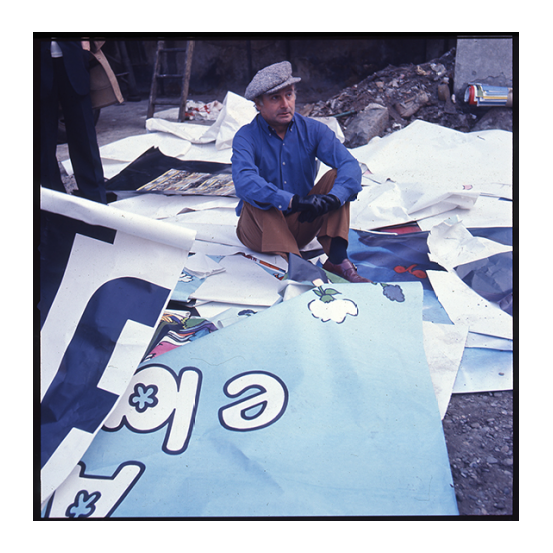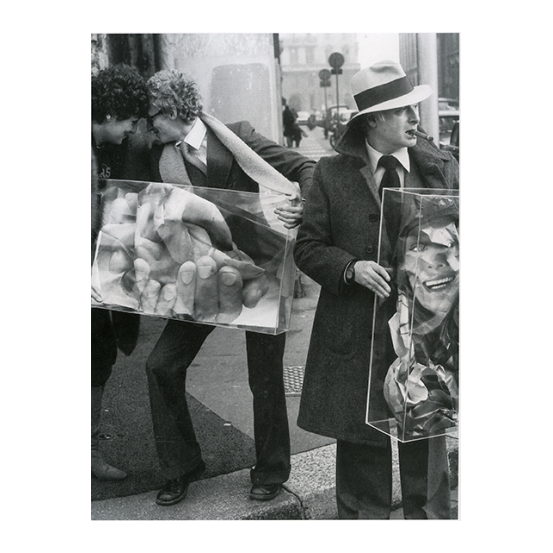Main menu:
THE ARTIST > CHRONOLOGY
In Paris, the artist worked on photographic reproductions that he exhibited in April of 1965 at the Galerie J. The research that developed by combining painting with photoreproduction techniques is at the basis of the heterogeneous trends brought together by Pierre Restany under the name of Mec-Art, which gather either Italian and French artists.
Alongside the subjects with historical and political backgrounds, some of the photo emulsion on canvas works also referred explicitly to the world of sexuality. The experimentation with photoreproduction techniques soon became enhanced by his interest in the kind of removal technique that was typical of the artist’s early career: with the artypo —a term created by joining the words art and typographie— Rotella appropriated the printing proofs of the advertising posters that were to be destroyed. The artist recounts how he created an artypo on the first page of his first autobiography, Autorotella. Autobiografia di un artista, which he began working on in 1966. In July of the same year a series of artypos was exhibited for the first time in the hall of the Teatro La Fenice in Venice.
At the end of 1967, he left the studio in Rue Clément. During a short stay in New York - where he was hosted by Christo and Jeanne Claude - he met Andy Warhol, who in those years was experimenting with screen printing and reproducing advertising images. The American world attracted the artist, who in January 1968 left Paris and moved to the Chelsea Hotel in New York, which was frequented by young musicians and artists, including Robert Indiana, Roy Lichtenstein, Claes and Pat Oldenburg, and of whom Rotella made some portraits with the photo emulsion techinique.
In 1970 in Milan was held the Festival of Nouveau Réalisme. During this event Rotella proposed the rite of laceration in Piazza Formentini and a performance of phonetic poetry at the Rotonda di via Besana.
After several trips to the East, during which he visited India, Japan and Thailand, in 1972 he published Autorotella. Autobiografia di un artista.
Parallel to the realization of photographic reproductions and artypos, the artist experimented with the formal possibilities of image manipulation using nitro solvents and emulsions: this is how he made the frottages (or “abrasions”), shown for the first time in April 1973, and the effaçages.
In 1974, Tommaso Trini wrote a monograph on Rotella’s work, the first detailed study about the artist’s career. During the same period the Edizioni Plura produced a vinyl recording of phonetic poems by the artist.
In April 1975 opened the first major retrospective on his activity at the Rotonda di via Besana in Milan, where there were are also exhibited some “plastiforme” produced that year. The exhibition was curated by Restany.
On 9 September 1977, during a demonstration in Milan, the artist was hit in the face by an iron ball and hospitalized. For the rest of life, he would bring on the face the marks of that wound. Strongly influenced by that political climate, called “anni di piombo”, Rotella used the most iconic images of that period as subject of some photographic reproductions: the works realized, for the strong black and white contrast, has a shattering impact and well describes the dramatic nature of those events.
In 1978 the artist was invited by Carlo Ripa di Meana to take part in the 38th Venice Biennale. In September the city of Ferrara presented a retrospective of his work; in 1979 he exhibited some “Mec Art” pieces in Milan, at the Galleria Il Dialogo.
